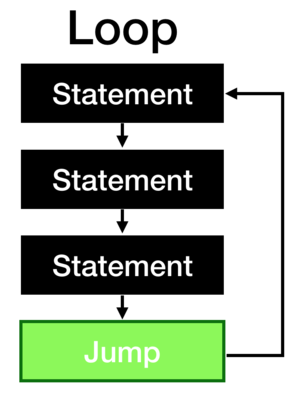Difference between revisions of "W1154 For Loop"
| Line 3: | Line 3: | ||
* [[W1151 Conditional and Flow Chart]] | * [[W1151 Conditional and Flow Chart]] | ||
== Introduction == | == Introduction == | ||
Loops are the general term for ''executing a defined segment of code zero or more times'', where the number of iterations is dependent upon test conditions within the loop. The '''for loop''' is a construct which enables us to execute a segment of code a ''defined number'' of times. It is thus the most appropriate choice when we know in advance how to calculate the number of iterations prior to beginning the loop. While this construct is not strictly necessary, it provides [[Glossary#Syntactic_Sugar| | Loops are the general term for ''executing a defined segment of code zero or more times'', where the number of iterations is dependent upon test conditions within the loop. The '''for loop''' is a construct which enables us to execute a segment of code a ''defined number'' of times. It is thus the most appropriate choice when we know in advance how to calculate the number of iterations prior to beginning the loop. While this construct is not strictly necessary, it provides [[Glossary#Syntactic_Sugar|syntactic sugar]] by clarifying intent. | ||
== General Loop == | == General Loop == | ||
Revision as of 19:10, 5 January 2020
Prerequisites[edit]
Introduction[edit]
Loops are the general term for executing a defined segment of code zero or more times, where the number of iterations is dependent upon test conditions within the loop. The for loop is a construct which enables us to execute a segment of code a defined number of times. It is thus the most appropriate choice when we know in advance how to calculate the number of iterations prior to beginning the loop. While this construct is not strictly necessary, it provides syntactic sugar by clarifying intent.
General Loop[edit]
In the case of a general loop, we can see that the three statements in the figure on the right will be repeated. However, without a test condition this loop would theoretically execute forever and is formally termed an infinite loop. To be useful, a test condition is required in order to inform the CPU when the loop should be exited. Thus, loops generally have two distinct parts:
- A test condition which informs the CPU when the loop should be exited
- A body which is the code which is repeated for each iteration of the loop


